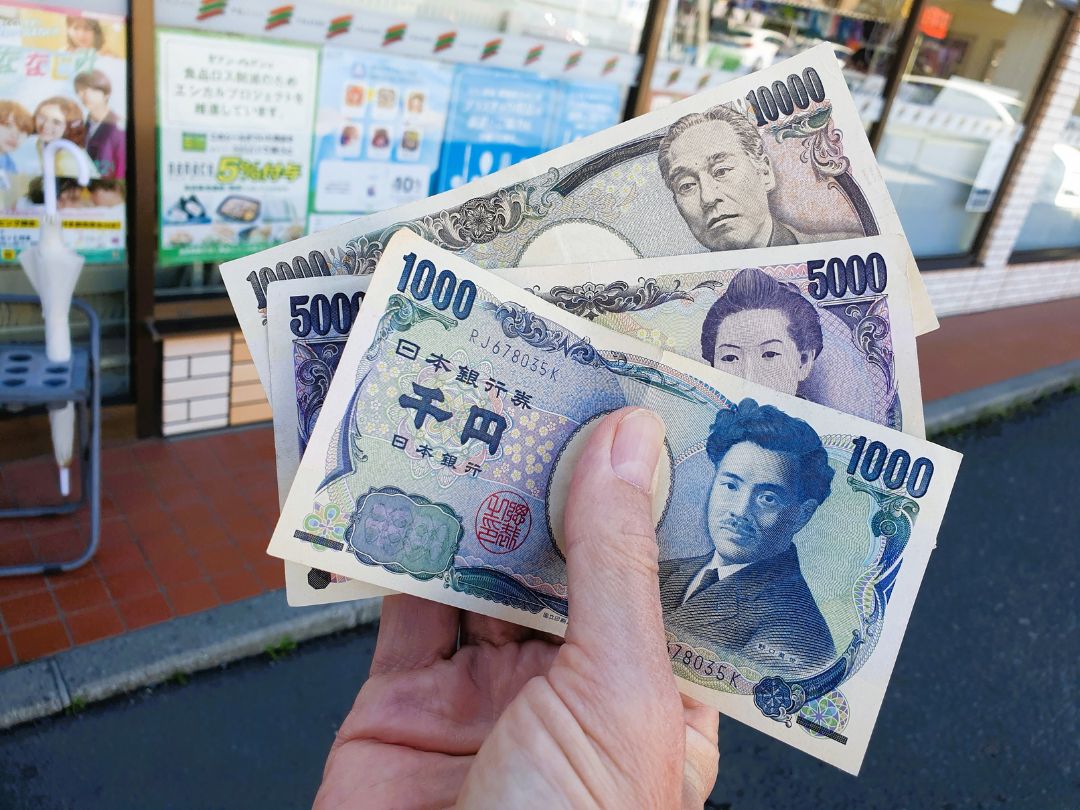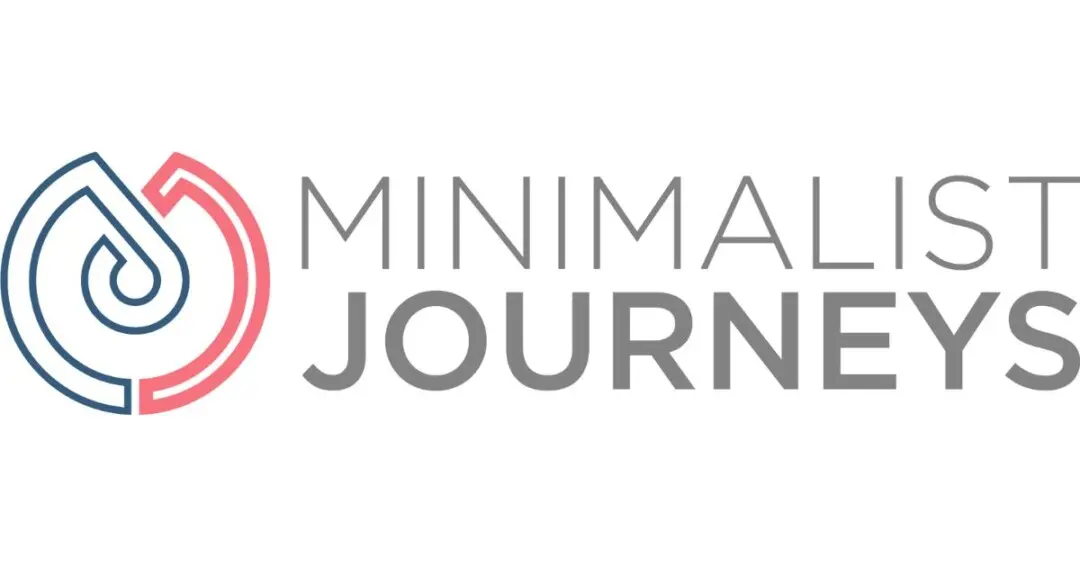This article may contain links to products and services we use and recommend. We may receive compensation when you click on links to those products. For more information, see our Disclosure Policy.
Are you planning a trip to Japan and wondering how much it will cost? You’ve come to the right place. This article outlines our actual travel costs during our three-month trip to Japan in 2023. Contrary to popular belief, Japan can be an affordable travel destination, with surprisingly reasonable accommodation and dining options. Plus, with the current exchange rate working in your favour, now is the perfect time to explore the Land of the Rising Sun. We also share some useful tips on how to save money during your time in Japan.
What is the currency of Japan?
The Japanese Yen (JPY) – the word yen meaning circle or round object – has existed since 1871. In circulation these days are
- Banknotes in JPY1,000, JPY 2,000, JPY5,000 and JPY10,000 denominations; and
- Coins are available in JPY1, JPY5, JPY10, JPY50, JPY100, and JPY500 denominations (though the latter two are most commonly used).
Travel Cost Assumptions
When reading this article, please note that our travel costs are based on a couple travelling together. We are independent, budget-conscious travellers, researching and organising our itineraries using our go-to travel planning tools.
Our travel style is reasonably consistent wherever we go, which is excellent when you want to compare travel costs between destinations and over time:
- Accommodation: We usually stay in self-catered accommodation (homestays, locally owned guesthouses, hostels and short-term rentals) - in our room with (preferably) a private bathroom, though the kitchen and other areas may be shared.
- Dining and Groceries: We usually eat two meals a day at home. But we like to eat out once a day or at least every few days (and prefer locally owned restaurants and small eateries away from the tourist hotspots).
- Experiences: Many of our activities are free or low-cost. When we pay for attractions or activities, we are very selective, as our funds are limited, just like everyone else's (while we're travel bloggers, we seldom get a free ride).
- Transportation: We walk frequently and use public transportation wherever possible. We only occasionally hire a vehicle. The costs to enter or exit a country are not included (though we may include them for reference in the comments).
- Other: Our total daily costs also include mail scanning and forwarding services (as we are location-independent), our mobile phone and data plans, and travel insurance, although only as they relate to the time spent at our destination.
During our most recent visit, we spent the maximum time we could in Japan (that is, 90 days on a tourist visa), which means we travelled slower and saw fewer attractions and did fewer activities each day than someone who spends a two—or three-week vacation in Japan and tries to see and do as much as possible each day.
Japan Travel Cost Summary
Considering those assumptions, we spent an average of JPY9,205 per person per day in Japan (or USD69 using the foreign exchange rate applicable at the time).
| Category | JPY | USD | Percentage of total |
|---|---|---|---|
| Accommodation | 3650 | 27.28 | 39% |
| Dining and Groceries | 2236 | 16.71 | 25% |
| Transportation | 1569 | 11.73 | 17% |
| Experiences | 756 | 5.65 | 8% |
| Miscellaneous | 994 | 7.43 | 11% |
| Total per person per day | JPY9205 | USD69 |
Indeed, it’s not the cheapest country we’ve visited to date, but surprisingly more affordable than we thought.
Map of Accommodation, Points of Interest, Eateries and Transport
Below is a map of the recommended accommodations, points of interest, eateries, and transport terminals or stops mentioned in this article.
If you are interested in our other detailed maps containing recommended accommodations, points of interest, eateries, and transport terminals/stops, check out the following destinations:
How much does accommodation cost in Japan?
As independent travellers, we booked almost all our accommodations via the platforms we recommend below. We only used the help of an agent when organising accommodation for our two multi-day hikes – the Kumano Kodo (Kumano Travel) and the Nakasendo (the Tsumago Tourist Information Center). Most accommodations were short-term rentals – studios or one-bedroom apartments with a small kitchen (where basic meals could be prepared) and bathroom and laundry facilities. We also stayed in family-run guesthouses (minshukus) during our hikes, often with onsen facilities.
During our three months in Japan, our accommodation costs averaged JPY7,720 (USD58) per room per night:
Our most expensive accommodation was at Koyasan Saizenin [Google Maps location], a Buddhist Temple in Koyasan – at JPY14,199 per night. While not cheap compared with our other accommodations in Japan, the temple stay (shukubō) was well worth it, as it allowed us to experience a multi-course shōjin ryōri dinner and breakfast (not included in above price), bathe in the traditional onsen and attend the Buddhist early morning prayer.
At just JPY4,500 per night, our most affordable accommodation was a stay at Guest Cafe Kuchikumano [Google Maps location] on Day 0 of our Kumano Kodo Hike. This was a traditional Japanese guesthouse (minshuku) with a large shared kitchen and bathroom. The host was super nice, and we had a lovely evening around the fire, toasting mochi balls (the Japanese version of marshmallows) and then dipping them in zenzai, delicious sweet red bean soup.
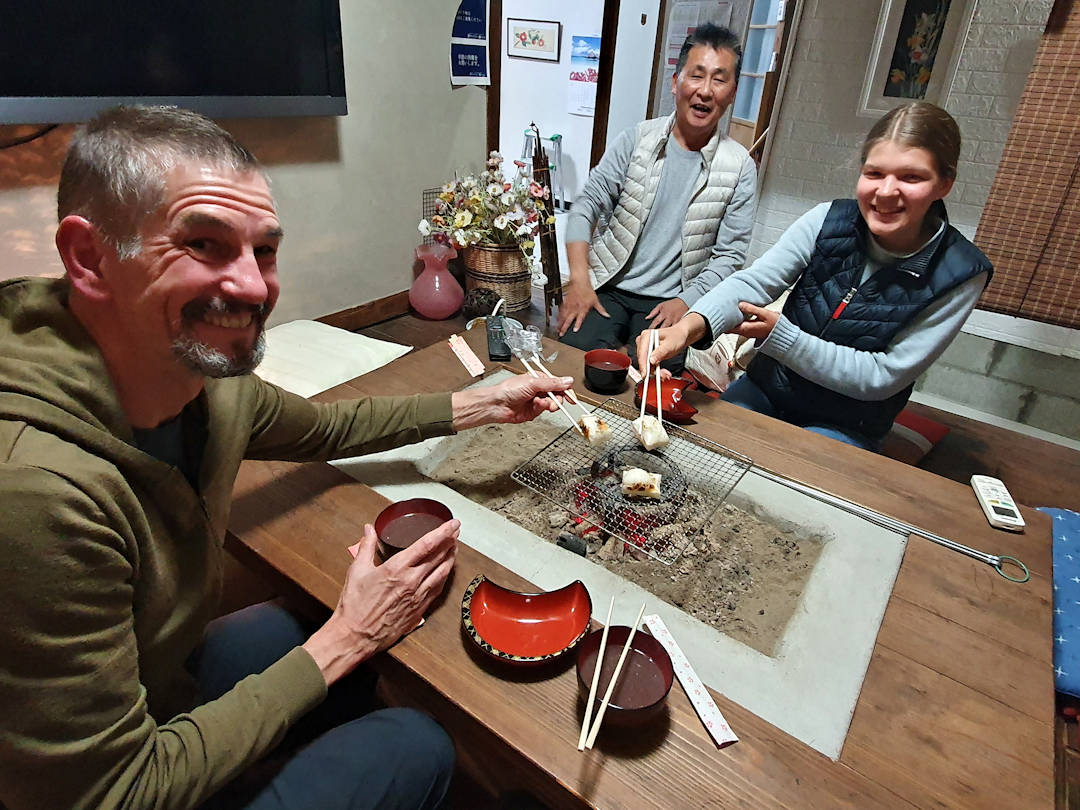
Interacting with your Japanese hosts and other guests is a wonderful experience
Laundromats
Although most of the accommodations we booked had a washing machine, we used laundromats eight times over the three months in Japan, costing us a total of JPY4,600 (or JPY575/USD4 per laundromat use).
Communications
Before arriving in Japan, we purchased two NIPPON 4G-LTE SIM cards (one for each phone), costing JPY3,280/USD25. Each card came with 15 GB of data and was valid for 180 days, giving us peace of mind for navigating, staying in touch, and finding local gems.
However, if we were planning this trip today, we’d likely go for an eSIM from Airalo. Why? It’s incredibly convenient—no waiting for delivery or fumbling with physical SIM cards. Plus, you can activate it right on your phone before leaving home!
If you’re new to Airalo, you can get an extra 15% off with the code NEWTOAIRALO15 at Airalo.com. Already a user? You’re not left out—use the code AIRALOESIM10 for 10% off. These discounts are available until 31 December 2026.
Switching to an eSIM is a game-changer, especially for travellers who want to stay connected without the hassle or waste of traditional SIM cards. It’s one small way to simplify your travels—and do something better for the planet!
Stay connected (almost) anywhere with Airalo eSIM
We use Airalo eSIMs (on Sandra's Samsung Galaxy S25) whenever we are overseas. Activating it ahead of time means we have instant internet access as soon as we land - no need to join queues to buy a physical SIM before leaving the airport. While Airalo works in over 200 countries, we couldn't use it when visiting the Yemeni island of Socotra. So, do check the country list before you buy. Also, check if your phone is eSIM-enabled.
Exclusive discount codes for our audience
If you're new to Airalo, use the code NEWTOAIRALO15 to receive 15% discount on Airalo eSIMs. If you're already an Airalo customer, use the code AIRALOESIM10 to enjoy a 10% discount on eSIMs. Offers are valid until 31 December 2026!
How much do you budget for experiences in Japan?
You can pack a lot into a three-month trip to Japan, and we did. All our experiences added up to JPY131,583 (USD984) between the two of us—on average, JPY756 (or just under USD6) per person per experience.
Here are some of our favourite things to see and do (including the cost per person when we visited – note that some were FREE):
Gifu Prefecture
Kamitakara-no-Yu Onsen, Shinhotaka [Google Maps location]: JPY800
Kanda House, Shirakawa-go [Google Maps location]: JPY400
Matsuri no Mori Museum, Takayama [Google Maps location]: JPY1,000
Takayama-Shinhotaka Ropeway (Bus and Cable Car) Two-Day Pass, Takayama [Google Maps location]: JPY6,800
Ishikawa Prefecture
Yasue Gold Leaf Museum, Kanazawa [Google Maps location]: JPY310
Nagano Prefecture
City Museum of Art, Matsumoto [Google Maps location]: JPY410
Miyamoto shōkai one-day bicycle rental, Nagano [Google Maps location]: JPY1,500
Nagano Marathon Foreign Athlete Entry Fee: JPY15,437
Obuse 3-in-1 Museum Pass (Hokusai, Kozan Takai and Obuse Museums), Nagano: JPY1,300
Togakushi Bus Day Pass, Nagano: JPY3,000
Yamanashi Prefecture
Bike ride around Kawaguchi and Saiko Lakes, Fujikawaguchiko: FREE (bicycle was provided by accommodation)
Witnessing Magomi Matsuri/Chigo-no-Mai at Kawaguchi Asama Shrine and Hike to Tenku no torii, Fujikawaguchiko: FREE
Kubota Itchiku Art Museum, Fujikawaguchiko [Google Maps location]: JPY1,300
Hiroshima Prefecture
Mt Misen Hike, Miyajima: FREE
Hiroshima Castle, Hiroshima [Google Maps location]: JPY370
History and Folklore Museum, Miyajima [Google Maps location]: JPY300
Mitaki-dera Temple, Hiroshima [Google Maps location]: JPY200
Peace Memorial Museum, Hiroshima [Google Maps location]: JPY200
Hokkaido Museum, Sapporo [Google Maps location]: JPY1,200
Okurayama Ski Jump Stadium, Sapporo [Google Maps location]: JPY1,000
Sapporo Snow Festival: FREE
Teine Ski Field (Day Pass and Gear Hire), Sapporo [Google Maps location]: JPY11,800
TV Tower, Sapporo [Google Maps location]: JPY1,000
Hyōgo Prefecture
Great Hanshin-Awaji Earthquake Memorial, Kobe [Google Maps location]: JPY600
Himeji Castle and Koko-en Garden, Himeji [Google Maps location]: JPY1,050
Nunobiki Herb Gardens, Kobe: JPY1,130
Kyoto Prefecture
Botanical Gardens, Kyoto [Google Maps location]: JPY400
Fushimi Inari Hidden Hiking Tour
Free Walking Tour, Kyoto: FREE/Donation
Gion Corner Cultural Performance, Kyoto [Google Maps location]: JPY5,500
Hike Mt Inari, Kyoto [Google Maps location]: FREE
Kyoto Insider Sake Experience
Kyoto Samurai Experience
Ninomaru-Goten Palace, Kyoto [Google Maps location]: JPY1,050
Naha Prefecture
Todai-ji, Naha [Google Maps location]: JPY600
Osaka Prefecture
Tokyo Prefecture
teamLab Planets, Koto City [Google Maps location]: JPY3,500
Hokusai Museum, Sumida City [Google Maps location]: JPY1,000
Japan Olympic Museum, Shinjuku City [Google Maps location]: JPY500
Watching the sunset from Carrot Tower, Setagaya City [Google Maps location]: FREE
Yayoi Kusama Museum, Shinjuku City [Google Maps location]: JPY1,100
Kanagawa Prefecture
Open-Air Museum, Hakone [Google Maps location]: JPY1,600
Okinawa Prefecture
Rental Charinko Bike Ishikawa, Zamami [Google Maps location]: JPY2,800
Fukushuen Garden, Naha [Google Maps location]: JPY200
Himeyuri Peace Museum, Naha [Google Maps location]: JPY310
Japanese Naval Underground Headquarters, Naha [Google Maps location]: JPY600
Okinawa Prefectural Museum, Naha [Google Maps location]: JPY555
Shuri Castle Grounds, Naha [Google Maps location]: FREE
Tsushima-maru Memorial Museum, Naha [Google Maps location]: JPY500
Ishikawa Prefecture
How much should you budget for dining and grocery items in Japan?
As mentioned above, during our time in Japan, we stayed mostly in accommodation with a kitchen with basic cooking facilities, enabling us to have at least two meals a day at home. That said, it was sometimes easier and cheaper to buy ready-to-eat meals from convenience stores such as Lawsons, 7-Eleven, or Family Mart—though we did try to limit those occasions to avoid adding to Japan’s plastic waste problem.
Our daily dining costs in Japan averaged JPY1,193 (USD9) per person, with our most expensive dining experience costing us JPY2,350 per person at Steakland Kobe-kan [Google Maps location] – a worthwhile luxury to taste the famous beef the city is renowned for.
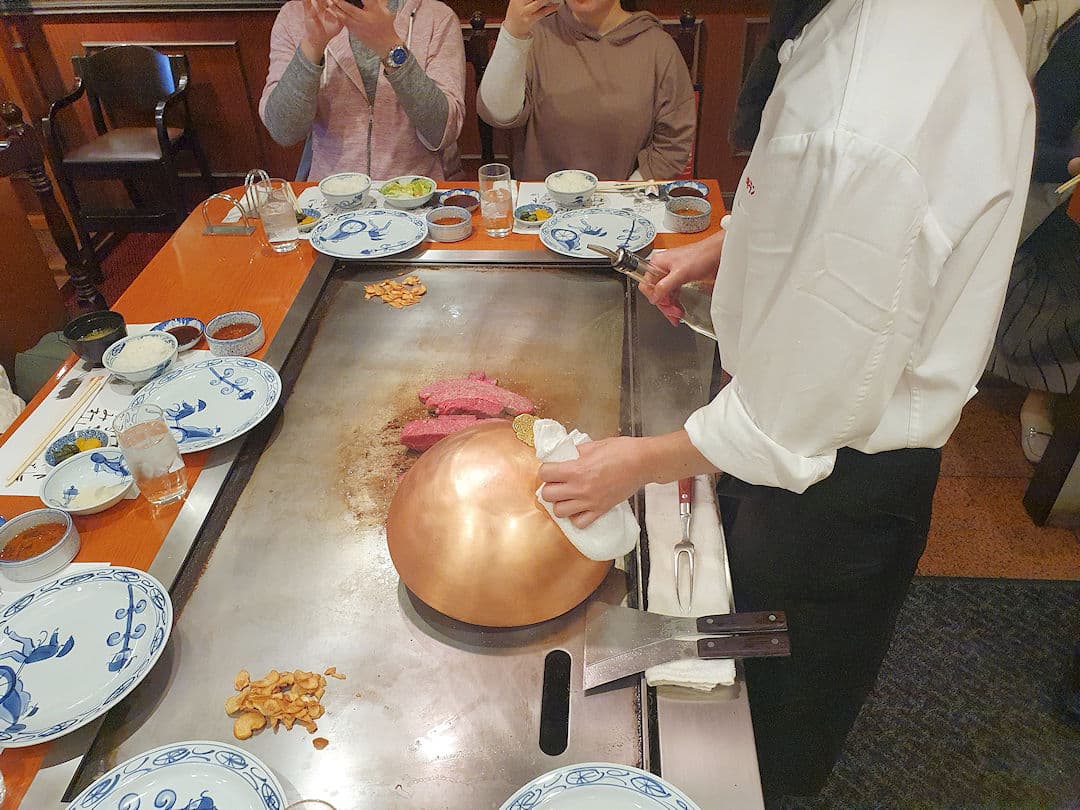
Our most expensive meal was at Steakland Kobe - but it was well worth it
Our daily groceries expenses in Japan averaged JPY1,043 (USD8) per person. We found Aeon supermarkets offered some of the best value for money, and between the major convenience store brands of 7-Eleven, Lawson and FamilyMart, we found Lawson offered the best range at the most affordable prices.
If you happen to visit Sapporo, make sure to pop into a Bostonbake branch [Google Maps location]. They have delicious pastries and buns daily (which are super affordable) – great to stock up on some items when you’re out and about during the Snow Festival. Sadly, Bostonbake only exists in Hokkaido.
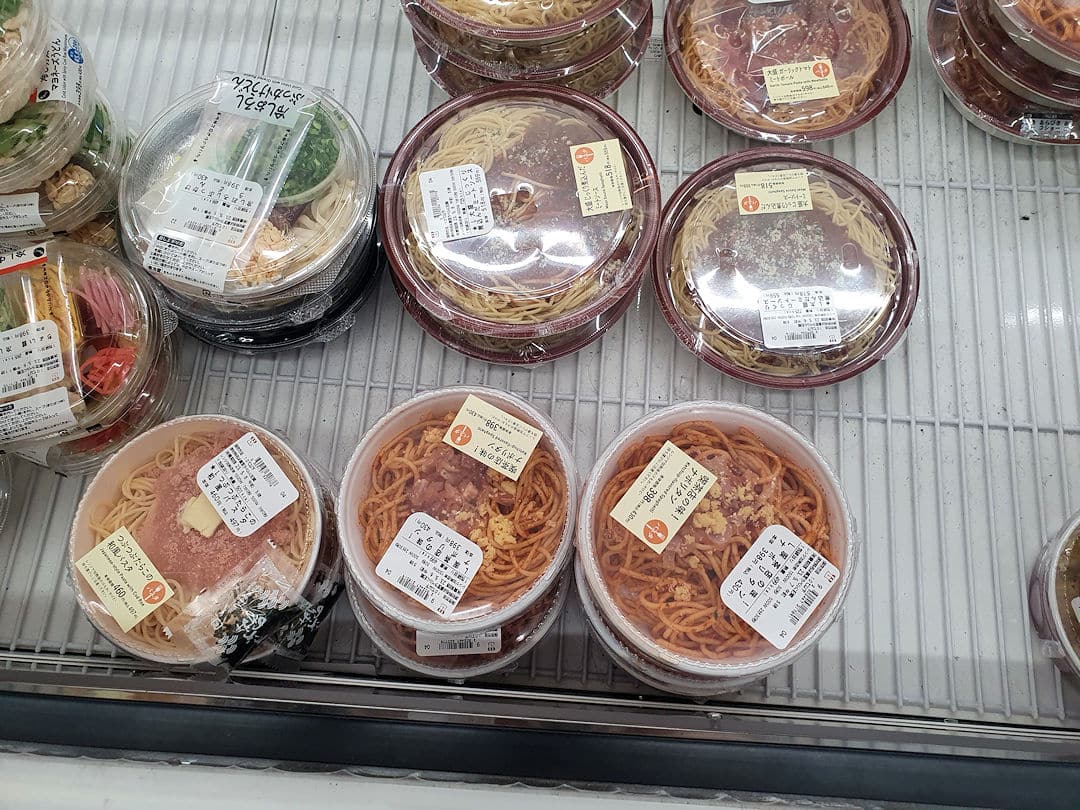
In Japan, ready-made meals are always available at supermarkets and convenience stores
Recommended Foodie Experiences
As Anthony Bourdain is famously quoted as saying: You learn a lot about someone when you share a meal. The best way to learn about a destination is by spending it with locals, in their homes, and in local markets. If you're a foodie and want to join some incredible cooking classes and food tours, here are our recommended EatWith offers in Japan.
Tokyo
How to save money on dining and groceries
One of the reasons we travel is to experience the local cuisine, but dining out all the time can quickly get expensive. We therefore always try to book accommodation with access to a kitchen - either a private kitchenette or our host's kitchen. That way, we can store food in the fridge and make meals. Paul and I eat out only once a day (sometimes only once a week), usually at lunchtime. This allows us to sample local dishes while taking advantage of great lunch deals. It also means we don't have to roam around unknown parts of town every night in search of a restaurant.
Portion sizes in many parts of the world are usually substantial, so we frequently share a three-course meal. The same applies if you go out for dinner: Order a starter or salad and a main, and that's usually enough for two people. An added benefit is that there is less food waste.
Every country has both more expensive and less expensive supermarkets for groceries. Ask your host about the more affordable options (for example, Aldi or Lidl in many European countries) and try to avoid convenience stores as much as possible.
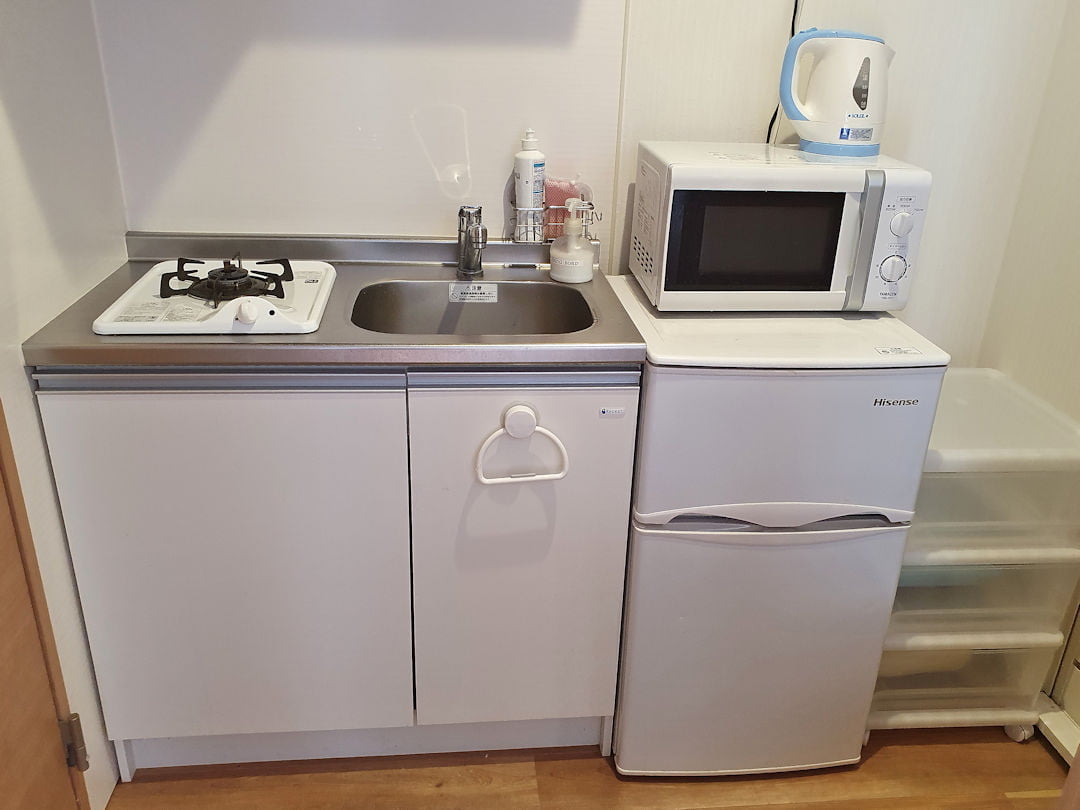
A Japanese apartment kitchen is not big but allows you to prepare your own meals (and save on dining out)
How much should the budget be for transportation in Japan?
Our transport costs over the three months we explored Japan averaged JPY1,569 (just under USD12) per person daily.
Air Travel
Given that Japan is an island country, we ended up taking two internal flights: The flight from Sapporo, Hokkaido, to Nara, Okinawa, cost us JPY16,580 each (with Peach Aviation), while the flight from Nara, Okinawa, to Hiroshima on Honshu cost JPY14,460 per person (with ANA). In both cases, unfortunately, we had to check in our travel packs as the strict carry-on limit was seven kilograms.
Train Travel
As we were keen to see the country and had more time to explore Japan than most foreign tourists, we always considered taking slower (and thus cheaper) train options over the Shinkansen. That said, we did want to ride the Shinkansen (and in some cases, there was just no feasible alternative). In the end, we took the bullet train three times: Our Hiroshima to Himeji trip cost JPY8,040 per person; the Kanazawa to Nagano journey JPY8,590 each and the train ride from Odawara to Tokyo JPY3,280 per person.
The Shinkansen was always markedly more expensive than slower train options. As an example, the distance from Hiroshima to Himeji was 239 kilometres, with a per kilometre cost of JPY33.64 on the Shinkansen, whereas the (slower) Rapid Express train from Himeji to Kyoto – a distance of 127 kilometres – cost JPY2,310 per person or JPY18.19 per kilometre. So, if you have time, take the slow train and save money.
And speaking of travelling slowly: If you’re in the Hakone area, ride the Hakone Tozan Train [Google Maps location] between Gora and Odawara. The scenery is stunning, and the train makes several switchbacks as it journeys down the mountain (or up if you make the trip in reverse)—a unique experience.
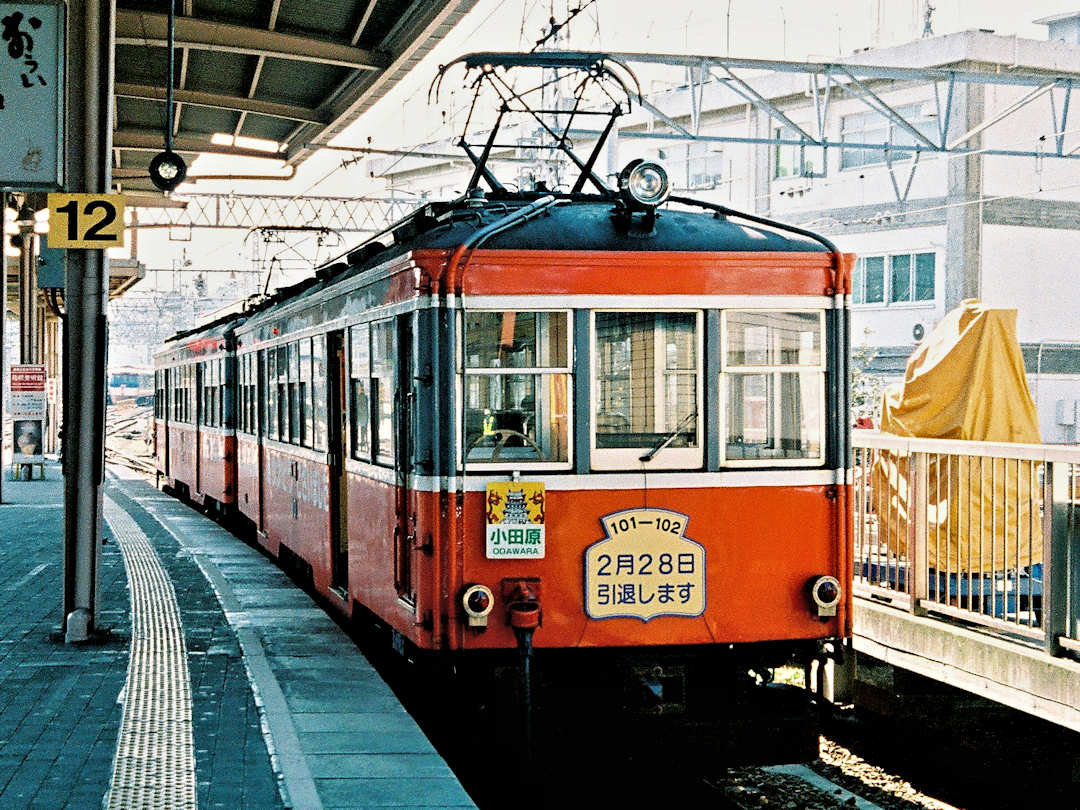
Take the Hakone Tozan Railway for its unique switchbacks down (and up) the mountains | Photo on Wikimedia Commons
How to save on transport costs in Japan?
Japan boasts an efficient transportation system. But as we found out, transportation costs add up quickly, especially if you travel extensively around the country.
Rail Transportation
Japan-wide Rail Pass
The Japan-wide JR Rail Pass is a cost-effective option for visitors who plan to move around often during their stay. It’s available for 7, 14, and 21-day periods and valid on consecutive days within the chosen timeframe. The pass allows unlimited travel on JR-operated services, including JR trains—even the Shinkansen (just NOT the Nozomi and Mizuho)—and JR-operated city buses. Seat reservations are included with the JR Rail Pass but must be obtained (free of charge) before travel.
The Japan-wide JR Rail Pass can only be purchased by foreigners outside Japan and must be exchanged for the actual pass upon arrival.
Although the JR (Japan Rail) Pass is a popular option for foreign tourists visiting Japan, it’s not the only way to save, and it may not even be worthwhile, depending on your itinerary. To determine if the Rail Pass is worthwhile, use an online route calculator to compare the costs of individual ticket purchases against the price of the pass.
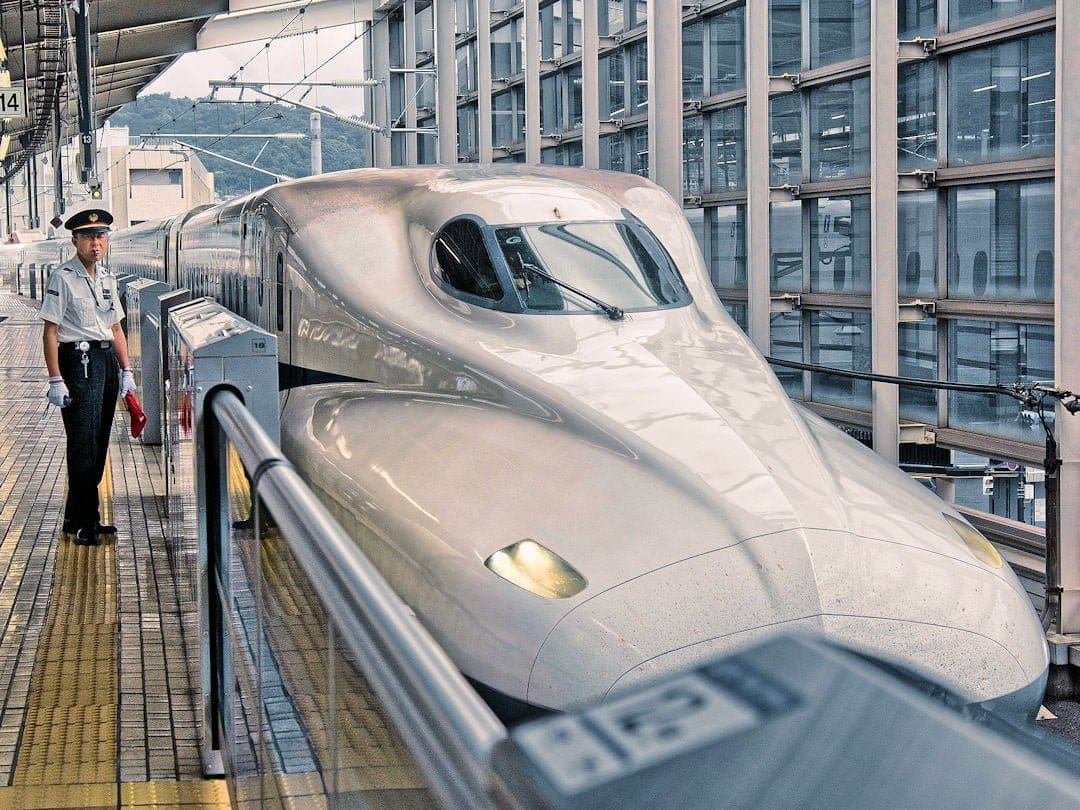
Trains in Japan are (almost) always on time, making train travel easy and convenient | Photo by Armin Forster on Pixabay
Regional Rail Passes
If the Japan-wide JR Rail Pass is useless to you, one (or several) of the many Regional Rail Passes might be worthwhile. A big difference to the Japan-wide Rail Pass is that you can buy these passes while already in Japan (though they are slightly more expensive than if you bought them from overseas). Worthwhile options to check out include:
- JR East: the JR Tokyo Wide Pass
- JR West: the Kintetsu Rail Pass, JR West Kansai Area Pass, JR West Kansai Wide Area Pass or the JR Kansai-Hiroshima Area Pass
- JR Central: the JR Takayama-Hokuriku Area Tourist Pass or JR Alpine-Takayama-Matsumoto Area Pass.
Without Rail Passes
Even without any of the rail passes, there are still ways to save on train travel in Japan:
- Shinkansen – Buy a non-reserved seat ticket (where available): This also offers greater flexibility as you’re not bound to a specific train. Which carriages are non-reserved varies from train to train (most often, it’s carriages 1-3 or 1-5). Arrive at the platform early to check out where the non-reserved carriages are located and position yourself/queue at the door marker of one of those carriages to increase your chances of getting a seat as you board.
- Alternatives – Opt for Limited Express trains: You may need to change trains along the way, but the trains in Japan are usually on time, and changing trains in Japan is not really stressful, especially if you travel light. Unless you’re travelling during rush hour, Limited Express trains are often less crowded than the Shinkansen, which also means you can save the seat reservation cost (where possible).
Extra tip: In many areas in Japan, you can use an IC card to tap on/off rather than having to purchase individual paper tickets for each journey. This saves time and makes train travel more convenient.
What are IC cards?
In Japan, you will often encounter the term IC card (IC stands for Integrated Circuit). IC cards are essentially plastic cards that can be topped up, and the amount stored on the card is used for transportation—simply by tapping on/off at the card reader—and increasingly at convenience stores and other places.
Each region issues their version of the IC card; for example
- If you enter via Tokyo Narita or Haneda Airports, you will buy the Suica or PASMO card.
- You will find the ICOCA card for sale if you enter via Osaka Kansai Airport.
Fortunately, 10 of the most common IC cards (including the two above) can be used across regions (and likely more will be added over time). Some regions (including Nagano and Okinawa prefectures) only allow their own IC card (at this stage) or cash.
Also, note:
- Cards (including any stored funds) expire after 10 years of non-use, but you can reuse them if you return to Japan within that timeframe.
- You can return it (and get a refund of the money on the card plus the deposit you paid for the card itself)—as long as it's in the region where you bought it.
- You can load the IC card onto your smartphone - via Apple Pay or Google Pay - but you won't be able to get a refund of your deposit or any funds stored when you leave the country.
Bus Transportation
Buses can be a good alternative to trains (especially for medium to long-distance and competitive routes). Do note, though, that while train timetables are (mostly) reliable, buses can be stuck in traffic just like any other road transport (and delays of 30 minutes and more are not unusual).
Bus Passes
One way to save on transport costs in Japan is to purchase a Willer Express Bus Pass. This pass allows you to travel for 3, 5, or 7 days within a period specified by you.
- Advantages: The travel days do not need to be consecutive, giving you flexibility in your itinerary. Willer Express has several night buses, which can save on accommodation costs. Additionally, you can easily book your seats in advance online through the user-friendly Willer Express website.
- Disadvantages: The pass can only be used on Willer Express buses and only on the least comfortable four-seat-per-row bus types.

Travellers to Japan may also be able to save on transport costs by using intercity bus services like those provided by Willer Express | Photo on Wikimedia Commons
Smart PAYG
Even without a bus pass, you can save money when travelling by bus in Japan:
- Avoid backtracking and travel point to point instead. For example, stop in Shirakawa on the way from Takayama to Kanazawa (or vice versa) rather than visit the UNESCO World Heritage site on a day trip—this also reduces carbon emissions.
- Make use of specials—Just ask at the local tourist office at your destination or check the websites of the bus companies operating there, such as Alpico and Nohi Bus in the Japanese Alps. Make sure they are worthwhile by comparing individual fares (via Google Maps) against the special fare.
Other Expenses you may incur when travelling to Japan
Travel Insurance
We always buy travel insurance – because medical expenses overseas can add up quickly, and our carry-on backpacks are pretty much everything we own.
Whenever we buy travel insurance, we thoroughly read the fine print. It’s tedious, we know. But if you’re planning certain activities (for example, hiring a motorbike or hiking above 3000 metres), it’s crucial to know whether your insurance pays if the worst happens. Otherwise, you may have paid all that insurance premium and are still left to foot a (potentially) massive bill.
For this trip, we used Cover-More. For our three months in Japan, our joint Cover-More Travel Insurance Single Trip International Comprehensive+ Policy costs us AUD1,519/USD1,022 (or just under AUD9/USD6 per person per day). Although we didn’t need to submit a claim and therefore don’t have first-hand experience with their claims process, we won’t be buying another policy from Cover-More again,
Finance and Bank Fees
To our surprise, cash is still King in Japan, so ATM withdrawals are a regular occurrence. To avoid unnecessary ATM withdrawal fees, we always research before our trips to figure out which overseas bank offers the best exchange rate and charges the lowest fees for ATM withdrawals.
In the case of Japan, we had done all our research. We knew our Bankwest Debit Card charged no foreign transaction fees, and 7Bank ATMs charged no ATM withdrawal fees. We didn’t know you had to press Credit when trying to withdraw with the debit card overseas (Bankwest only told us about that small fact when queried afterwards). After our debit card was declined multiple times, we ran out of time and had to use our credit card. While we had topped up the card with some money beforehand (to avoid nasty cash advance fees), the credit card provider still charged us AUD4 (or JPY382) for the ATM withdrawal. You live and learn.
Luggage Transfer and Storage Services
Unless you plan to hike the Kumano Kodo or Nakasendo, you will likely not need a luggage transfer service. We ended up using luggage transfer twice (both times with Yamato Transport):
- On our final day on the Kumano Kodo, paying JPY2,500 for the same-day transfer of one travel pack from Koguchi to Nachikatsuura and
- During our Nakasendo hike, we paid JPY1,620 for the standard transfer of one travel pack from Osaka to Matsumoto.
We also used luggage storage facilities on occasion to store our travel packs for a few hours or excess luggage during our whole week-long Kumano Kodo hike. The total storage costs were JPY3,640 (an average of JPY607 per storage use).
If you need to store excess baggage in Osaka, we recommend Daikoku Locker. Alternatively, you can try Radical Storage, which has agencies all over Japan.
Haircuts and Massages
When you explore a country for three months, you will likely need a haircut (in that country). I had mine at a barber in Osaka about halfway through our trip for JPY2,200 (a bit over USD16).
We also took the opportunity to get a 90- and 60-minute massage, respectively, just before the Nagano Marathon at Relaxation Salon Lovina [Official website, Google Maps location] for a total cost of JPY13,200 (or JPY6,600/around USD49 per massage). It was well worth it, and we both would recommend it to anyone visiting Nagano.
Securing your currency needs overseas can be expensive, but it doesn't have to be. We've saved a significant amount of money over the years simply by knowing what to do (or, more importantly, what not to do).
- How not to get caught out by alarming FX rates and exorbitant commissions;
- How to exchange cash on your overseas trip.
- Which debit/credit card is best for your overseas trip, and
- How do you avoid unnecessary fees when withdrawing cash?
Suppose you need to transfer money to pay for your travels upfront. In that case, we recommend Wise and XE Money Transfer (we use them interchangeably, depending on which one offers the better foreign exchange rates and lower commissions).
Donations and Gifts
It is traditional and appropriate to make a donation when visiting a Shinto shrine. It doesn’t have to be a lot, especially when you throw loose change into the large container before you bow your head and clap your hands. All our donations totalled JPY1,511.
How much did it cost you to explore Japan?
I wrote this Japan Travel Costs article based on our unique experience. If you have been to Japan recently as well and you have something to add to the costs of exploring It, please feel free to contact me.
Before you go, if you liked our article and found it helpful, we would appreciate it if you could share it with your friends and family via the Share buttons below. Even better: Leave a short review on Trustpilot or Google, which would help us further build our online reputation as a (trustworthy and helpful) travel and lifestyle blog.

